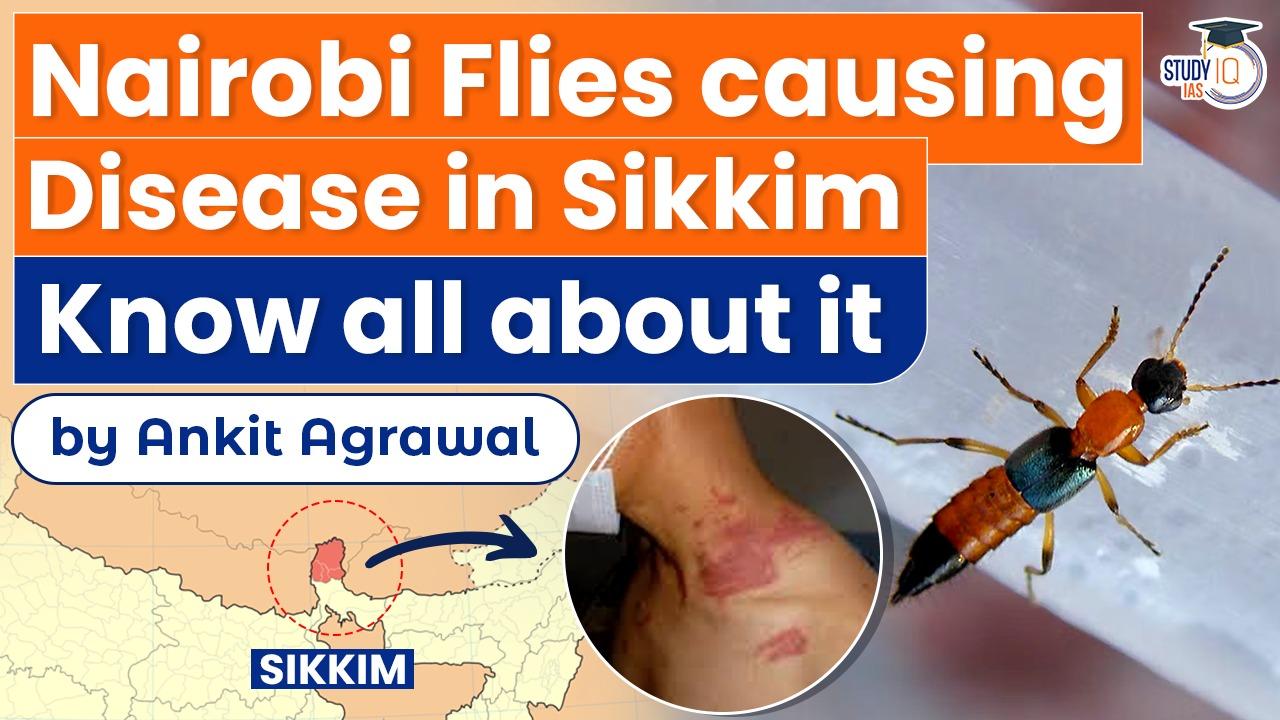Table of Contents
What has happened?
- Around 100 students of an engineering college in East Sikkim have reported skin infections after coming in contact with Nairobi flies, officials said on Tuesday (June 5).
- The population of Nairobi flies, a species of insect native to East Africa, is growing at a fast pace on campus of the Sikkim Manipal Institute of Technology (SMIT) in Majhitar, officials
- were quoted as saying.
- The flies can overwhelm new areas in search of breeding grounds and food supply, Health Department officials said.
- The college administration said infected students had been given medication and were recovering.
- One student who was recently infected had to undergo surgery n his hand.
What are Nairobi flies?
- Nairobi flies, also called Kenyan flies or dragon bugs, are small, beetle-like insects that belong to two species, Paederus eximius and Paederus sabaeus.
- They are orange and black in colour, and thrive in areas with high rainfall, as has been witnessed in Sikkim in the past few weeks.
- Like most insects, the beetles are attracted by bright light.
How are humans affected by them?
- Usually, the insects attack pests that consume crops and are beneficial for humans — but at times, they come in contact with humans directly are cause harm.
- Health officials say these flies do not bite, but if disturbed while sitting on anyone’s skin, they release a potent acidic substance that causes burns.
- This substance is called pederin, and can cause irritation if it comes in contact with the skin, leading to lesions or unusual marks or colouring on the skin.
- The skin begins to heal in a week or two, but some secondary infections can occur, especially if the victim scratches the irritated skin.
Past outbreaks
- Major outbreaks have happened in Kenya and other parts of eastern Africa.
- In 1998, unusually heavy rain caused a large number of insects to come into the region.
- Outside Africa, outbreaks have happened in India, Japan, Israel, and Paraguay in the past.
How to protect oneself?
- Sleeping under mosquito nets can help.
- If a fly lands on a person, it should be gently brushed off, and should not be disturbed or touched to reduce the chances of it releasing pederin.
- The area where the flies sits should be washed with soap and water.
- If they are squelched and end up leaving toxic fluids on the skin, care should be taken that unwashed hands do not touch any other part of the body, particularly the eyes
Q) Kala-azar is transmitted by which among the following?
- Dragon fly
- Housefly
- Tse-tse fly
- Sand fly
Latest Burning Issues | Free PDF
























 WhatsApp
WhatsApp